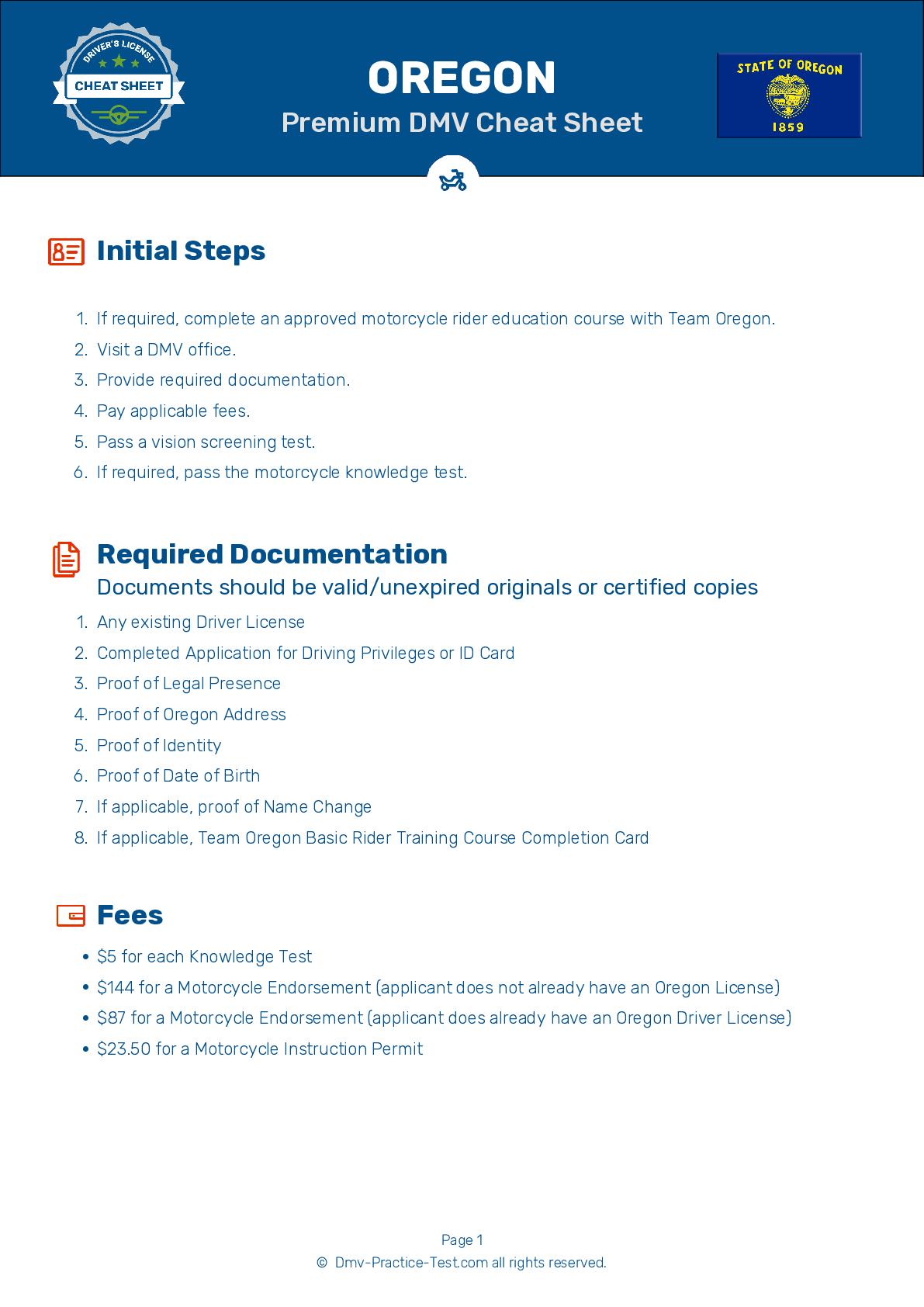Motorcycle Test | License OR 2025 | FREE Online Practice! #7 Page 4 of 4
Take this FREE motorcycle test (license in OR 2025) to check your knowledge of the road rules. To improve your results, download a motorcycle handbook online, study theory, and practice for free on our website. Still worried about how to get a motorcycle license in Oregon in 2025? Check our website for more sample tests, train as much as possible, and boost your grades!
19 . This road sign indicates:

This advisory speed sign indicates the maximum safe speed for a highway exit (in this example, 30 mph).
20 . If the chain or belt of your motorcycle breaks, you will:
If your drive chain or belt fails, you will experience an immediate loss of power to the rear wheel.
21 . When riding a three-wheeled motorcycle, you should stay in:
Unlike when riding a two-wheeled motorcycle, you are limited in lane positioning when riding a three-wheeled motorcycle. Keep toward the center of the lane to be sure your wheels do not cross the painted lines into opposing traffic.
22 . When riding, you should:
Always look through a turn to where you want to go. Turn only your head to look, not your shoulders, and keep your eyes level with the horizon.
23 . When riding on a slippery surface, you should not:
To safely ride on a slippery surface, you should reduce your speed, avoid making sudden movements, and use both brakes if you need to brake.
24 . The best way to handle tailgaters is to:
If possible, change lanes and let a tailgater pass your vehicle. Speeding up may result in the driver continuing to tailgate you at a higher speed, thereby increasing the danger.
25 . When riding in a staggered formation, the third rider in the group should ride _______ behind the leader.
In a staggered formation, the lead rider should ride on the left side of the lane, with the second rider one second behind on the right side of the lane. The third rider should be on the left side of the lane, two seconds behind the lead rider.
See the exact questions that will be on the 2025 Oregon DMV exam.
99.2% of people who use the cheat sheet pass the FIRST TIME
Jeneen was tired of paying $5/gallon. She got herself a scooter that required the motorcycle license. She studyed the motorcycle test cheat sheet and passed her test the next day!
Christopher tells us how he knew nothing prior to obtaining the motorcycle study guide, and he only got one question wrong because he clicked on the wrong answer by mistake.



